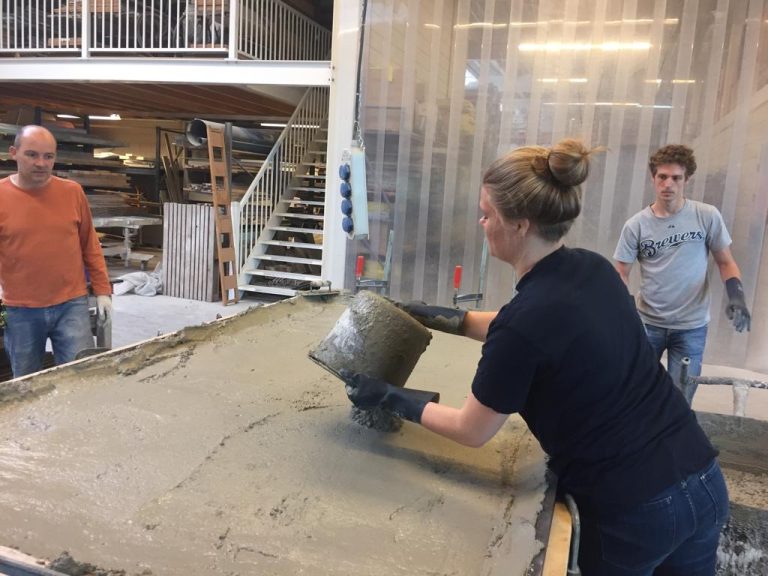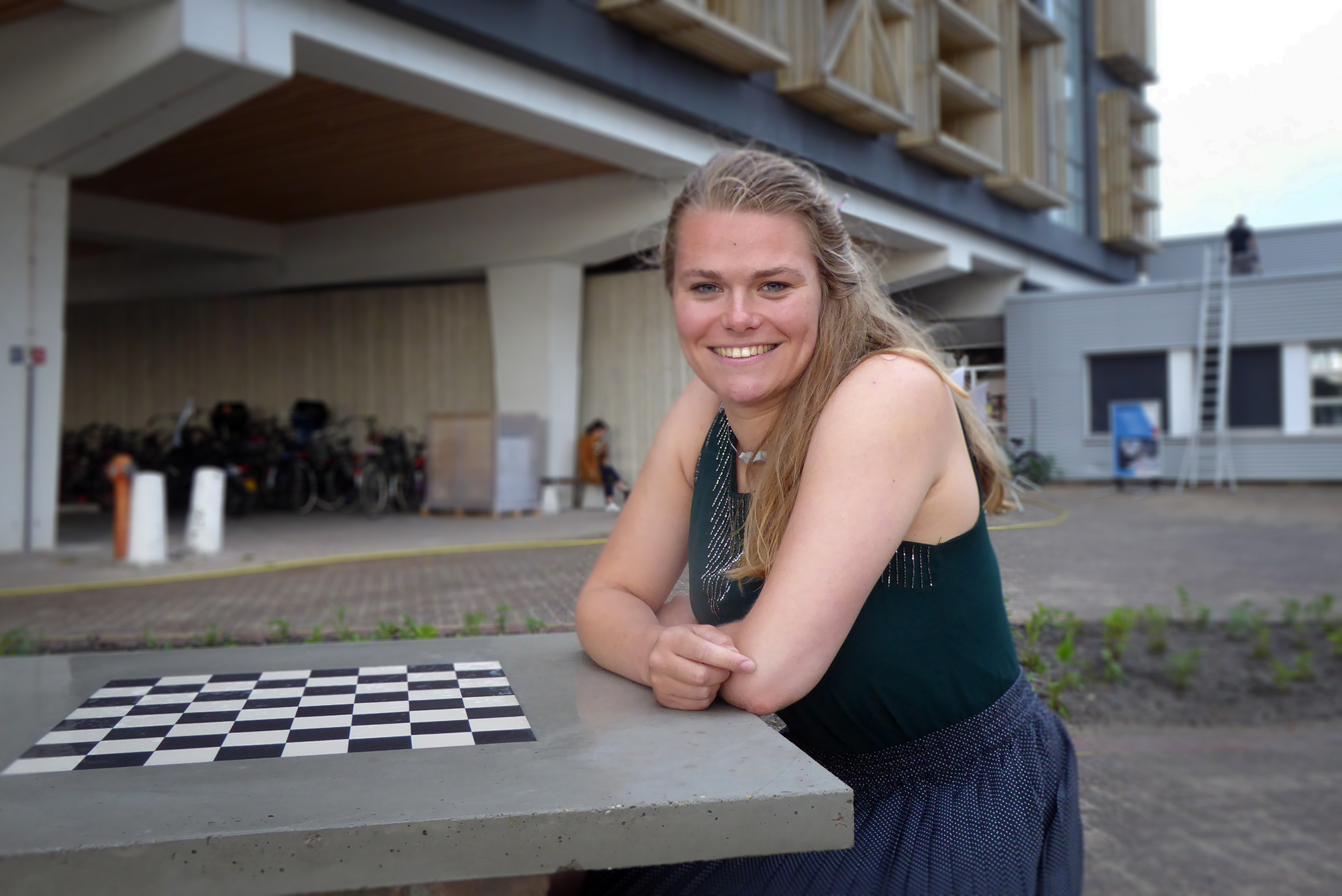The Amsterdam Living Lab was enriched with two concrete outdoor furniture objects last week. It’s a students’ statement of up-cycling concrete.
Reused concrete normally ends up ground and under the tarmac as a foundation for road construction. It’s a typical example of down-cycling: reusing material at less value.
In the context of a Living Lab course, the consultancy company KplusV, as a partner of the European Horizon 2020 project CINDERELA, challenged master students Gwenhwyfar Spil and Toni Kuhlmann to up-cycle concrete.
They designed and built recycled concrete outdoor furniture for a small square at the Amsterdam Living Lab next to the AMS Institute building, calling it the Concretely Circular project.
Fellow students joined in building the formwork, mixing the concrete, pouring it into the mould, and placing the heavy objects at the AMS Living Lab. They experienced the workshops as a welcome change away from the laptop.
To be honest, environmentally criticised cement still needed to be added to the reused concrete to make it workable, but the concrete only needed half as much fresh sand and stones. The product, called Freement, was touted as the world’s first in circular concrete at its introduction last year.
Although proud of their outdoor furniture, Gwenhwyfar Spil sees recycled concrete as greening an essentially non-sustainable product. Pursuing a thesis on critical raw materials in construction, she hopes to contribute to fully circular material cycles.
- Spil is amongst the first generation of students of the joint TU Delft and Wageningen University master Metropolitan Analysis, Design & Engineering (MADE).
-
The Amsterdam Living Lab is located on the former naval island (marineterrein) Kattenburg.
 Pouring concrete. (Photo: Marita de Vries)
Pouring concrete. (Photo: Marita de Vries)Do you have a question or comment about this article?
j.w.wassink@tudelft.nl


Comments are closed.